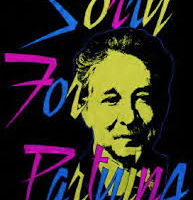-
Recent Seventh Circuit Decision On Copyright Fair Use Defense At Odds With Landmark Second Circuit Ruling
09/22/2014
 Earlier this week, the United States Court of Appeals for the Seventh Circuit addressed the scope of the “fair use doctrine” as a defense to copyright-infringement claims. In doing so, the court had some harsh words for the Second Circuit’s much-anticipated decision last year in Cariou v. Prince. The court’s ruling is the latest to analyze the significance of “transformative use” in determining the fair-use defense, and it sets up an interesting divergence among the Circuits on this important topic.
Earlier this week, the United States Court of Appeals for the Seventh Circuit addressed the scope of the “fair use doctrine” as a defense to copyright-infringement claims. In doing so, the court had some harsh words for the Second Circuit’s much-anticipated decision last year in Cariou v. Prince. The court’s ruling is the latest to analyze the significance of “transformative use” in determining the fair-use defense, and it sets up an interesting divergence among the Circuits on this important topic.
Photographer Michael Kienitz sued Sconnie Nation LLC and its vendor for copyright infringement over a photograph Kienitz took of the Mayor of Madison Wisconsin, Paul Soglin, at his inauguration in 2011. The photograph was posted to the City’s website where it was subsequently downloaded by Sconnie Nation, altered and placed on t-shirts and tank tops with the phrase “Sorry for Partying.” Among other things, the background of the photo was removed and Soglin’s face was colored lime green and then surrounded by multi-colored neon writing. The t-shirts were made in response to Soglin’s efforts to shut down the annual Mifflin Street Block Party and were sold for the 2012 event.
The three-judge panel affirmed the lower court’s ruling that the shirts had made fair use of Kienitz’s copyrighted image and thus defendants were not liable for copyright infringement. The decision was notable not so much for its holding—which seems correct under any articulation of the fair-use defense—but for its scathing criticism of the Second Circuit’s April 2013 decision in Cariou v. Prince (which we blogged about last Spring) and the court’s reliance there on the importance of “transformative use” in determining the applicability of a fair-use defense. In Cariou, the Second Circuit ruled that well-known “appropriation artist” Richard Prince made fair use of photographer Patrick Cariou’s photographs, focusing on the “transformative” nature of Prince’s works. In the Seventh Circuit Decision, Judge Easterbrook criticized the exclusive focus on “transformative” use, finding it “best to stick with the statutory list.”
In finding that the t-shirt’s reproduction of the photographic image was fair use, the court emphasized the lack of impact on the plaintiff’s market, stating that a t-shirt is “no substitute for the original photograph” and “Kienitz does not argue that defendants’ products have reduced the demand for the original work or any use of it that he is contemplating.” The court next looked at the amount of the photograph taken in relation to the copyrighted work as whole, which was deemed negligible as “[d]efendants removed so much of the original that, as with the Cheshire Cat, only the smile remains.” The court noted that with all the alterations “the original is almost extinguished.”
The court did find that certain factors weighed against a finding of fair use. For example, “defendants did not need to use the copyrighted work” and the fair-use doctrine is “not designed to protect lazy appropriators.” Moreover, the use of the photograph “may injure Kienitz’s long range commercial opportunities” because “[f]ewer people with hire or cooperate with Kienitz if they think that the high quality of his work will make the photos more effective when used against them!” However, the court noted, Kienitz did make these arguments, which in any case would not have been sufficient to offset the fact that “by the time defendants were done, almost none of the copyrighted work remained.”
The Seventh Circuit’s decision serves as a contrasting model to the Second Circuit’s opinion last year articulating the appropriate standard for establishing a fair-use defense. What both decisions have in common, however, is that a fair-use defense requires a case-by-case analysis, and there is no one-size-fits-all approach to determining whether an unauthorized use of copyrighted material constitutes fair use.
Art Law Blog
